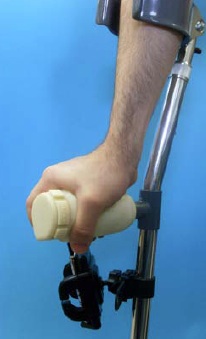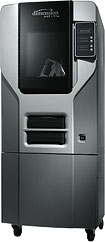DDM for Forearm Crutch Application a Winner
Every year about 10 million pairs of crutches are sold in the United States. For people with lifelong disabilities, those suffering military injuries, and even for temporary conditions, doctors are increasingly prescribing forearm crutches rather than the traditional under the armpit style.
 Now, thanks to some students at the University of Massachusetts-Lowell and direct digital manufacturing (DDM), forearm crutches could take on a new dimension.
Now, thanks to some students at the University of Massachusetts-Lowell and direct digital manufacturing (DDM), forearm crutches could take on a new dimension.
The Society of Manufacturing Engineers (SME) holds an annual DDM competition. Students from all over the U.S. submit unique products created using DDM technology and materials.
Walking with Your iPod
This year, the first place winners were a quartet of UMass Lowell students who designed a "Custom Forearm Crutch Handgrip with Integrated iPod Controller and Flashlight." The team – consisting of Adam McLaughlin, Jordan Tye, Lisabeth Sizer and Mark Damplo – came up with a unique design for a handgrip that allows the wearer to comfortably and seamlessly control an iPod while walking. The crutch user can listen to music and change songs or volume without having to stop. The integrated flashlight comes in handy when navigating dark areas and opening doors.
The grip is custom tailored to each individual. The user grasps a clay form and this impression is 3D scanned into a modeling program such as SolidWorks. A Dimension SST 1200es Fused Deposition Printer builds the grip out of tough ABS thermoplastic – including printing moving buttons and a hinge – as a single assembly. Models are printed from the bottom up with precisely deposited layers of modeling and support material. There is no curing time – the models are ready to be used as soon as the support material is removed. 
This is far faster and more efficient process than the traditional method, which involves making a mold and a cast from epoxy. Also, the older approach also does not allow for individual customization. The health benefits of a grip tailored to the user's unique hand include providing a larger contact area that reduces pressure on blood vessels and nerves, and reduces the risk of carpal tunnel and other injuries to tendons and cartridge.
Will the design move from prototype to product anytime in the near future? In their submission, the students wisely included a cost analysis that indicates a profit is to be made while providing a unique service to thousands of people.
For more information about the SME competition and a downloadable PDF describing the DDM crutch handgrip and how it is made, click here.










